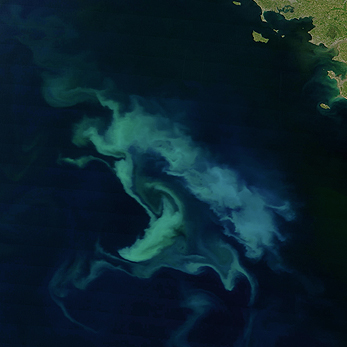The Common Procedure for the Identification of the Eutrophication Status of the Maritime Area (‘Common Procedure’) provides the framework for a comprehensive, harmonised characterisation of marine areas by OSPAR countries in terms of ‘problem areas’, ‘potential problem areas’ and ‘non-problem areas’ with regard to eutrophication. Its second application, relating to the period 2001–2005, was restricted to areas that had previously shown eutrophication problems or non-problem areas which gave concern that their quality status may have deteriorated.
The Common Procedure links ten indicators for nutrient enrichment and direct and indirect eutrophication effects in an integrated cause-effect scheme. Applications of the Common Procedure have so far focused on assessing eutrophication status and change in area status over time. Assessments of regional trends in individual indicators will need to receive more attention in future to make it possible to track improvements.
The indicators cover excessive nuisance algal blooms, loss and changes in biodiversity (for macrophytes, zoobenthos, fish) and oxygen deficiency. Differences in environmental characteristics, such as salinity, mean that not all parameters are relevant or robust indicators for eutrophication in each area. Indicators are elevated if they exceed the acceptable deviation from area-specific background conditions which OSPAR countries determine through regionally agreed methodologies, taking into account natural variability. As a result they are not applied in the same way across the OSPAR area. Data availability also contributes to differences in their use. An area is generally classified as a problem area if an indicator for nutrient enrichment and an indicator for eutrophication effect are elevated. Monitoring of the indicators is coordinated across the OSPAR area through agreed methodological standards covering sampling, analysis, reporting and quality assurance. The work supports judgement about the quality of coastal and marine waters under the EU Water Framework Directive and the EU Marine Strategy Framework Directive.

